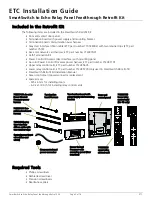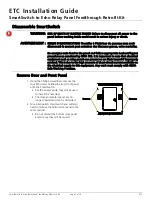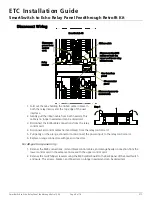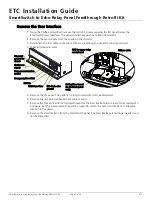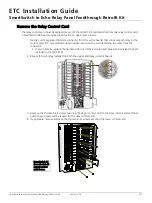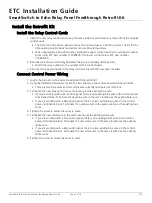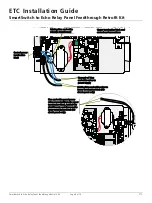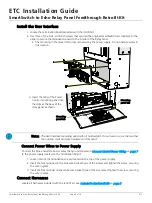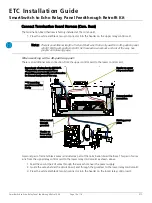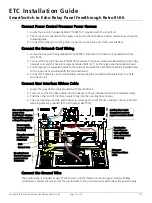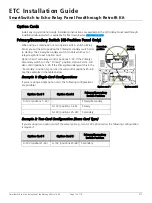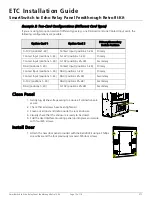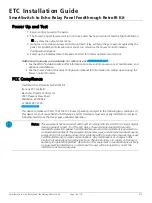
ETC Installation Guide
SmartSwitch to Echo Relay Panel Feedthrough Retrofit Kit
SmartSwitch to Echo Relay Panel Feedthrough Retrofit Kit
Page 14 of 14
ETC
Power Up and Test
1. Return control power to the panel.
2. The Power Control Processor will turn on once power has been restored. Press the light bulb button
to access the output check menu.
3. Using the up and down arrows scroll through each relay, verifying they are each recognized by the
panel. For additional information on menu setup, reference the
Power Control Processor
Configuration Manual
.
4. Power up the individual branch breakers and test for normal operation and control.
Additional manuals are available for reference at
:
• See the
ERP-FT Installation Manual
for information on cable routing, power up, test, maintenance, and
option card installation.
• See the
Power Control Processor Configuration Manual
for information on setting up and using the
Power Control Processor.
FCC Compliance
SmartSwitch to Unison Echo Retrofit Kit
(For any FCC matters):
Electronic Theatre Controls, Inc.
3031 Pleasant View Road
Middleton, WI 53562
+1 (608) 831-4116
This device complies with Part 15 of the FCC Rules. Operation is subject to the following two conditions: (1)
This device may not cause harmful interference, and (2) this device must accept any interference received,
including interference that may cause undesired operation.
Note:
This equipment has been tested and found to comply with the limits for a Class A digital
device, pursuant to part 15 of the FCC Rules. These limits are designed to provide
reasonable protection against harmful interference when the equipment is operated in a
commercial environment. This equipment generates, uses, and can radiate radio frequency
energy and, if not installed and used in accordance with the instruction manual, may cause
harmful interference to radio communications. Any modifications or changes to this
product not expressly approved by Electronic Theatre Controls, Inc. could void the user’s
authority to operate the product. Operation of this equipment in a residential area is likely
to cause harmful interference in which case the user will be required to correct the
interference at his own expense.


